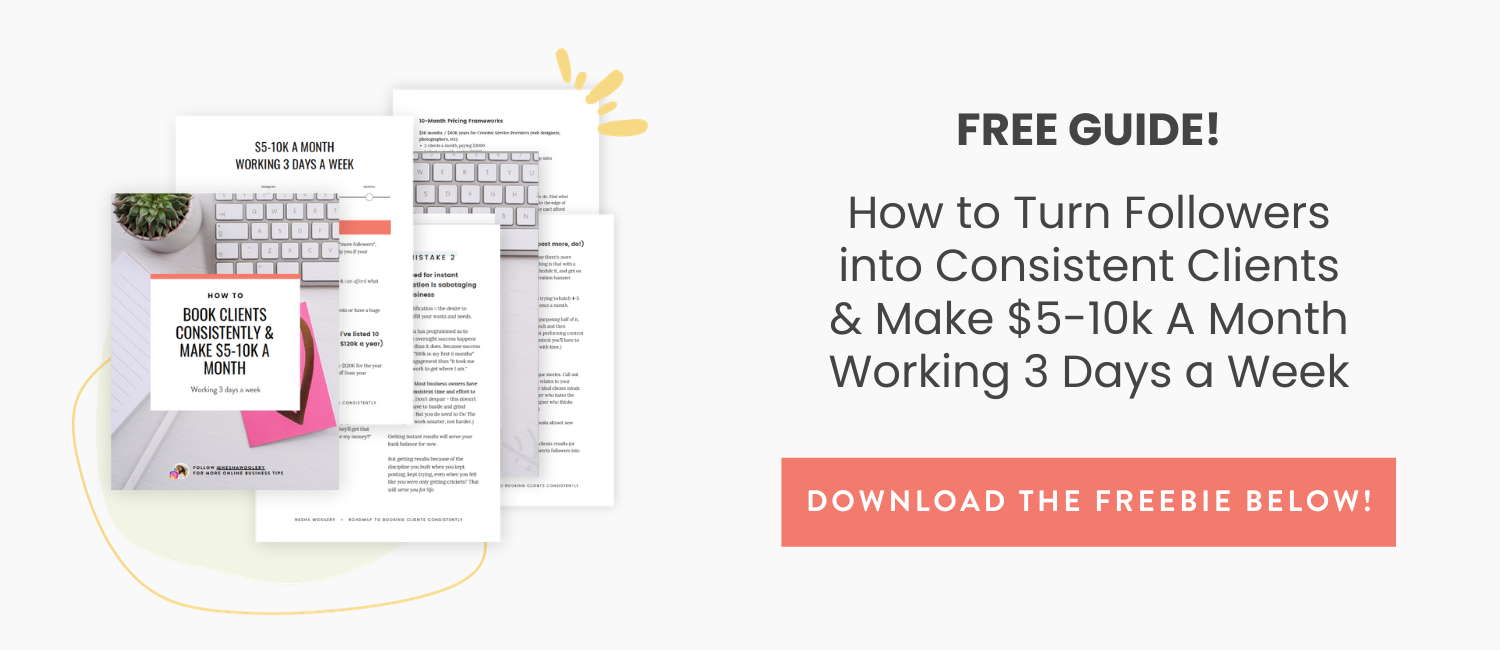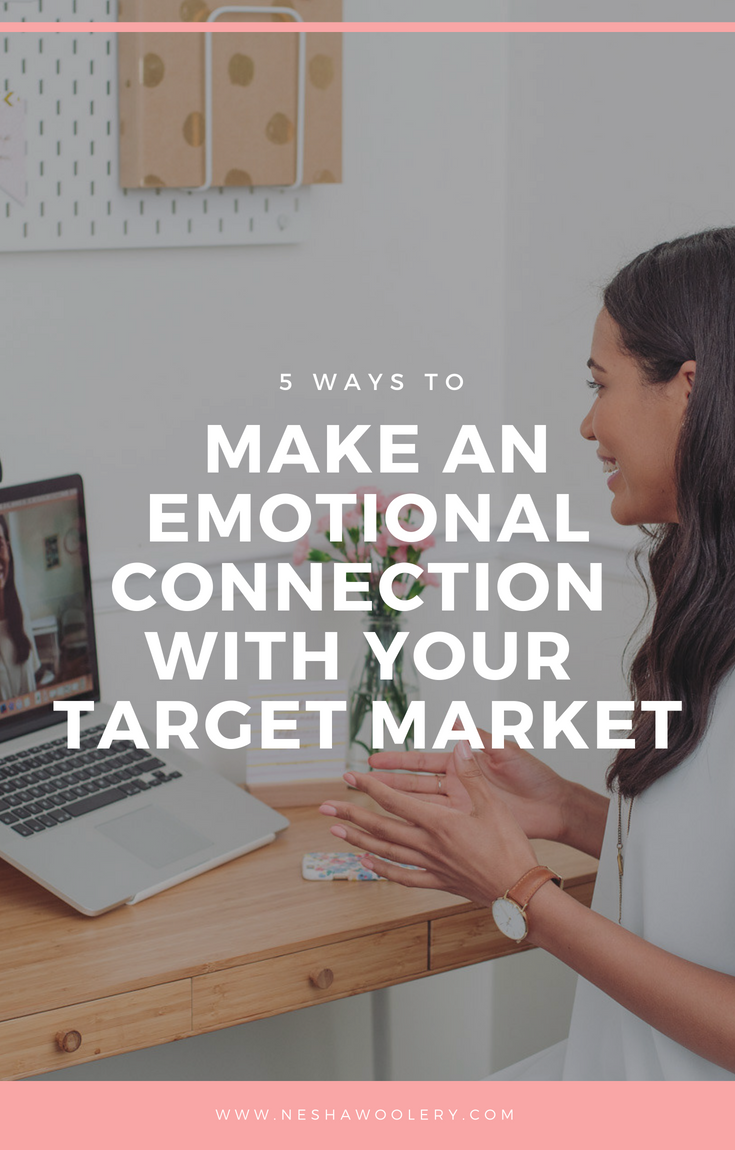Faceless marketing has been gaining momentum in the online business world, but is it truly the next big thing or just a passing trend?
Join me in this episode as I break down five reasons why I believe faceless marketing is more of a trend than a sustainable strategy for online businesses. From the lack of human connection to the oversaturation of this market, we'll explore the nuances of this approach and uncover alternative paths to building authentic and sustainable brands online.
Listeners will learn:
The drawbacks of faceless marketing in building authentic connections with your audience.
The challenges of standing out in a sea of faceless brands.
The importance of embracing human connection in online business.
3 small ways to get comfortable showing your face online.
Click “play” on the podcast player below to tune in or scroll down to read the article.
Subscribe on Apple Podcasts, Google or Spotify.
Resources Mentioned
The Content Batching Blueprint - Mini course to help you batch 1 month of content in 1 day
Story Sprint - Mini course to help you batch 1 month of Instagram stories in 1 day
Article
Faceless marketing: It's been gaining momentum in the online business world, with many saying it’s the next big thing.
But here's the thing—I have some reservations.
Today, I'm going to break down five reasons why I believe faceless marketing is more of a trend than a sustainable strategy for online businesses.
I want to preface this by saying that if you love it, do it! I’m not hating on you or saying it’s “wrong.” I’m just sharing my opinion on it, from the perspective of someone who’s been an online entrepreneur for 11 years and has seen many trends come and go.
1: Lack of human connection
When you remove the human element from your brand, you risk losing that authentic connection with your audience. People crave authenticity—they want to know the faces behind the brand, especially in a day and age where so many people are skeptical (rightfully) because there are sketchy people selling sketchy products & services online, and making sketchy income claims. Faceless marketing can feel impersonal and detached, leading to a lack of trust and loyalty from your audience.
Humans do not trust other humans very easily if they are hiding their face because hidden faces = hidden identity. And if buyers can’t be sure who is on the other side of the brand, or be sure they truly have the credentials they say they have, they perceive buying from you to be a high risk.
2: The only successful faceless brands I see are teaching faceless marketing.
Since most of the faceless brands we see are SELLING us faceless marketing, does faceless marketing really work that well for the majority of businesses that sell something else?
I think this is the biggest problem.
3. Long-term Sustainability.
Faceless marketing may yield short-term gains because it’s really popular right now, but what about the long haul? Building a sustainable business requires more than just hopping on trends. It demands a solid foundation built on trust, transparency, and genuine human connection.
I’ve been an online entrepreneur for almost 12 years so believe me when I say that you need to think long-term and not short term if you want to be successful online. I try not to follow too many trends. When everyone turns left, you turn right. It’s a very simple way to stand out in the market!
4. Limited Differentiation
In a sea of faceless brands, it's challenging to stand out and carve a unique identity for your business. Without a distinct personality or voice to set you apart, you run the risk of blending into the background and becoming just another nameless entity in the marketplace. I can’t tell you how many times each day I see a beige reel of someone stirring a coffee, or how much I see the same stock market videos.
The market is oversaturated with faceless brands. Which begs the question… if the simplest way to stand out these days is to show your face and be yourself, then why not?
5. Missed Opportunity for Connection.
One of the beauties of entrepreneurship is the ability to build meaningful connections with your audience. Faceless marketing robs you of that opportunity. By hiding behind a veil of anonymity, you miss out on the chance to forge genuine relationships and foster a loyal community around your brand.
Community in the online space is everything.
It’s what will keep your business alive and thriving for years. I have people buying from me who have followed my brand for 8+ years!
All you need is 1000 true fans. People who connect with you, your personality, your values, and need what you offer. 1000 true fans is all you need to run a thriving business for years. Because even if only 100 of them buy from you each year at $1k, that’s $100k a year.
But in my opinion, faceless brands will struggle to build that because people crave real
Why is faceless marketing so trendy in 2024?
I think the reason so many people gravitate to faceless marketing is because collectively, people are tired. And showing your face online in your content requires energy.
There are other reasons too of course. You might feel insecure about how you look, or feel that your race or religion would stop people buying from you.
Here’s what I’d like to say:
If you just don’t have the energy to make face-to-camera reels, don’t. You don’t HAVE to talk to the camera (I rarely do in my reels), but you can still show your face in some content. The trick to doing this without it feeling draining is to batch your content. Then you don’t have to physically muster the energy to do your make up and record a reel or story every day or week, just do it once a month.
My Content Batching Blueprint and Story Sprint will help you with this! They teach my step-by-step system for batching 1 month of content or Instagram stories in 1 day.
If you don’t want to show your face because you feel no one will buy from you because of your race or religion, let me ask you… do you really want to serve clients and customers who wouldn’t buy from you if they knew who you really were? I know I wouldn’t. I’d rather those people see me so they can go and buy from someone else. There are more than enough clients & customers in the world who will buy from you, regardless of your race, religion, gender, background, etc.
If you’re shy or you don’t want friends and family to see you posting, I feel you. Block friends and family. (It sounds harsher than it is but this is your business account, not a personal account!) Then start small with your profile photo and real first name on your bio.
About Nesha
Hey there! I’m Nesha, 11-year traveling entrepreneur and host of The Simple Business Show. I teach women how to build a $5-10K/month online service business working just 3 days a week, so they can have the financial and time freedom to live the life they dream of.
Looking for more ways I can help you? Here they are:
1:1 Coaching: Work with me on an intimate level to take your business from where it is to where you want it to go.
Group Coaching Program: The Simple Business Builder: Learn to build a $5-10K/month online business working 3 days a week.
Organize & Automate - Join 1200+ students and learn how to organize your entire online service-based business in just two weeks (on the side of your regular routine!) so you can stop stressing and fall back in love with your business.
Simple Sales School - Learn how to get a consistent flow of clients so you can build the income & financial freedom you desire.
Subscribe & Leave A Review!
If you enjoyed this episode, you can show your support by leaving a review, subscribing, or sharing your biggest takeaways on your Instagram story! Just remember to tag me @neshawoolery so I can see it.
Here’s how to subscribe and review the show:
Subscribe on your favourite podcast platform: Apple Podcasts, Google or Spotify.
To leave a review on Spotify: Open my podcast and click the “rating” button under my podcast name.
To leave a review on Apple Podcasts: Open my podcast, scroll to the bottom of the page and you’ll find the rating/review button.














